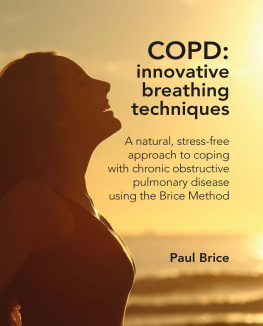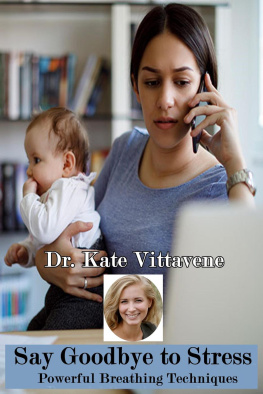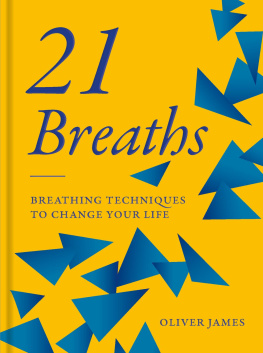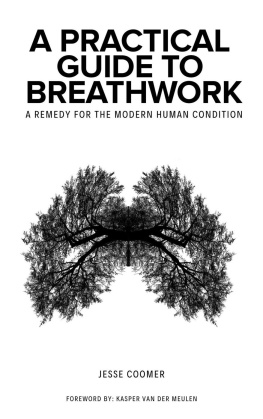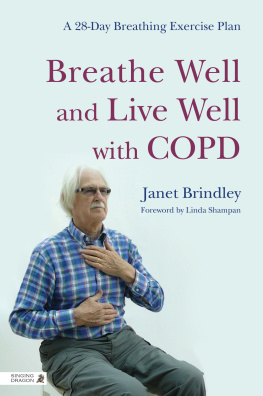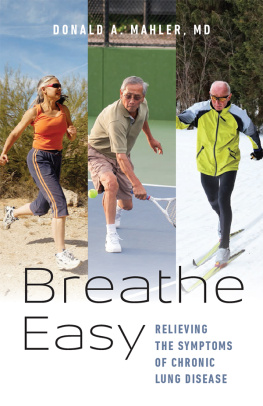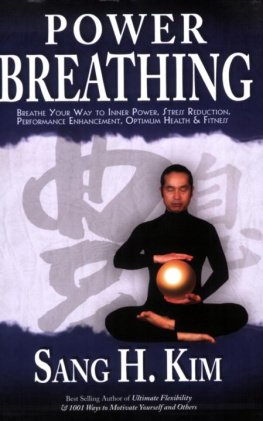Important safety advice for the reader
Before following any of the advice contained in this book, it is recommended that you consult with your doctor if you are in doubt as to the suitability of the exercises.
If, like many people who suffer from COPD, you are very inactive, read the section on Monitoring any pain in the Introduction (page ). This specifically advises you on what you should be able to do and what you should avoid.
Presumably the reason you are reading this book is because you or a loved one is experiencing problems with breathing. Getting out of breath is not always pleasant; however, it is normal. It is a natural response when your body needs more oxygen and energy when you do something that requires physical effort. Getting out of breath when we exert ourselves is a positive reaction and is usually viewed as a normal response to increased activity.
However, some people get out of breath every day when theyre not physically exerting themselves. They unexpectedly find it difficult or uncomfortable to breathe, and may feel they cant control their breathing. This long-term breathlessness is known as chronic breathlessness. It often develops gradually and lasts for weeks, months or years. Sometimes people also cough, bring up phlegm or feel wheezy (British Lung Foundation 2018).
Breathlessness is not only a physical symptom. It can also affect how we feel about things. An episode of breathlessness which has made us feel frightened or anxious will affect how we cope with the same situation when we next encounter it. This can lead to avoiding certain situations and allowing the fear of breathlessness to stop us living our lives as completely as we would wish.
Over the past 30 years working with people with breathing problems, I have been exposed to many methods of trying to counteract the symptoms of lung diseases, particularly chronic obstructive lung (or pulmonary) disease (COPD). General practitioners and specialists can refer suitable people with breathing problems to local services providing pulmonary rehabilitation programmes.
Over the past 15 years I have managed the local pulmonary rehabilitation service and have firsthand experience of how these programmes can enhance the lives of people with lung diseases. These invaluable programmes are particularly beneficial for people with COPD. Anyone with this condition should ask for a referral as they can dramatically improve how they cope with their breathlessness.
The Brice Method has developed from Paul Brice working with colleagues in the NHS over many years. Paul is an inspirational leader in the area of breathlessness management. His insight into the individuals fears regarding their challenging breathing is instinctive and within one session he can reduce fear and reinstate hope in the lives of people who have been severely affected both physically and mentally by their breathlessness.
I have worked closely with Paul over the past nine years and have always been impressed by his results. I have confidence in his abilities to look at innovative ways of helping individuals cope better with a condition which cannot be cured. Just because a condition cannot be cured does not mean that it cannot be helped.
I would encourage anyone with lung disease to read this book and to lend it to their Respiratory Health Care Professional to inspire others to adopt the safe and effective Brice Method for helping to manage breathlessness.
Heather Matthews RN RM BSC ( HON ) MSC
Independent Respiratory Nurse Specialist
UK
Paul Brice is a Sports Scientist and Clinical Exercise Specialist and has been working in the field of Exercise Rehabilitation for more than 20 years. A former international athlete, with a Joint Honours BSc in Sports Science and Biology, Paul has worked in the health and fitness sectors since 1987. Paul worked as a physical activity lead for the Great Yarmouth and Waveney PCT for seven years, working on promoting physical activity to improve health.
With business partner Spencer McCormack, Paul helped set up the first commercial health club to be based within an NHS Hospital in the UK and has worked for the NHS on a number of pilot schemes using physical activity in conjunction with conventional NHS treatment to help improve health outcomes.
Since 2009 Paul has been working alongside the award-winning Respiratory Nursing Team, at the James Paget University Hospital, Great Yarmouth. (They won the Association of Respiratory Nurses, Nursing Team of the Year 2016.) Paul is one of the innovators of the BEET (Breathing, Exercise, Education, Training) programme. BEET is a community gym-based pulmonary rehabilitation programme that has had over 2500 patients referred to it over the last nine years.
Paul has a strong belief that sensible movement and moderate physical activity are two of the key foundations of a healthy, balanced body and mind. He works with patients by explaining the impact inactivity and immobility can have on the many health systems in the body, to help them understand that they may be able to reverse their health issues if they put a little effort into being more active and more mobile. Paul shows patients what they should aim for and how they can progress, and helps to keep them motivated to reach their goals. These beliefs and approach have been fundamental to the development of the Brice Method.
Paul is passionate about making a difference and now works delivering exercise rehabilitation programmes and personal training for private clients, under his business Brice Exercise Specialists Ltd.
Firstly, I would like to thank my oldest and best friend, Don Thompson. He would not realise how influential his musings have been since we started working together in the same company, on the same day, over 30 years ago. Don has been a consistent fount of knowledge, and the worn-out books and suggested reading list he gave me over 20 years ago when he was studying osteopathy, Rolfing, Hellerwork and other body working techniques, prompted me to look outside the conventional sport and fitness box.
I need to acknowledge Heather Matthews, Carol Nicholls, Fiona Lang, Lesley Barber and Maria Hunter from the Respiratory Nursing Team at the James Paget University Hospital. Heather, Carol and Fiona have all been instrumental in enabling me to develop my method. They have played vital roles in the development of BEET, the innovative community pulmonary rehabilitation programme. Their drive and determination to meet patients needs are why they were recognised as the ARNS, UK Respiratory Nursing Team of the Year in 2016.
Finally, I would probably never have got around to finding a publisher for this book if it had not been for one of my former patients, Morag Minton. Morag had very severe COPD and was told her best opportunity to live a full life was a double lung transplant. She was referred to me having just spent eight weeks in hospital with a very severe chest infection over the Christmas and New Year. When I met her, Morag was very down, as weak as a kitten, and her shoulders were so tight we could hardly prise them from her ears. She spent most of her day hunched up trying to recover from the previous breath she had just taken. She had been a top fitness presenter and loved rock climbing. She took on board the exercises I gave her, and her breathing started improving almost immediately. She did her daily exercises until she could attend the gym, where she ended up not only getting stronger herself, but also talking to novice patients when they looked a little lost.

